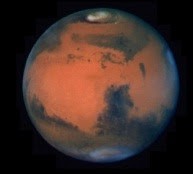This is stretching the definition of "natureza" somewhat, but it is kind of interesting.
Just recently an international* group announced the first "possible" life supporting planet, Gliese 581d**. Not that it DOES have life, just that it could. Gliese 581 is in the constellation of Libra, about 2 degrees north of the brightest star there, Beta librae - look high in the sky, more or less due East from Vitoria, Brazil at 9 o'clock at night at the moment.
At first sight Gliese 581d, orbiting the red dwarf Gliese 581, doesn´t look very much like home. For a start it is about 5-7 times bigger, but more importantly it receives only about 1/3 as much sunlight as Mars, let alone us, so any water there should be frozen solid. It also probably orbits with one side always facing the sun, so has a permanent dark side. However, computer modelling shows that it might be a little more complicated.
A dense atmosphere heavy in CO2, which would match planets in our solar system, would act like a blanket - the famous greenhouse effect. This would raise surface temperatures above the melting point of water, so you would have liquid water, which is essential for life (as we know it).
So what would it be like there? Well, pretty dark at the best of times, and maybe completely dark in some places, with what little light there is being red from the red dwarf star. Lots of CO2 in the air so we probably couldn't breath without masks, and we would feel very heavy, gravity being about twice what we are used to.
All this is speculation, but it might not be much longer before we know more. Gliese 581d is not that far away - well, it is, 20 light years, but relatively not that far. So probably before long telescopes will be good enough to get at least a light spectrum which would tell us a lot about the atmosphere, especially if it's green!
And... there might be another way. In October 2008 a group in Ukraine beamed a message directly to Gliese 581 using a high powered radio telescope, it should arrive in 2029. An answer would arrive in 2049.
* A French/ English group led by a Swiss using a telescope in Chile. Wordsworth et al 2011, Astrophysical Journal Letters
** It doesn't have a proper name yet, nor does the star. Any suggestions?


2 comments:
Cold and dark? God, this is not for Brazilians!...
Of course you humans are a bit backward and know little about life outside of earth. I come from the vicinity of Betelgeuse which is a bit hot and very suburban but, other than that, very nice.
Zaphod
Post a Comment